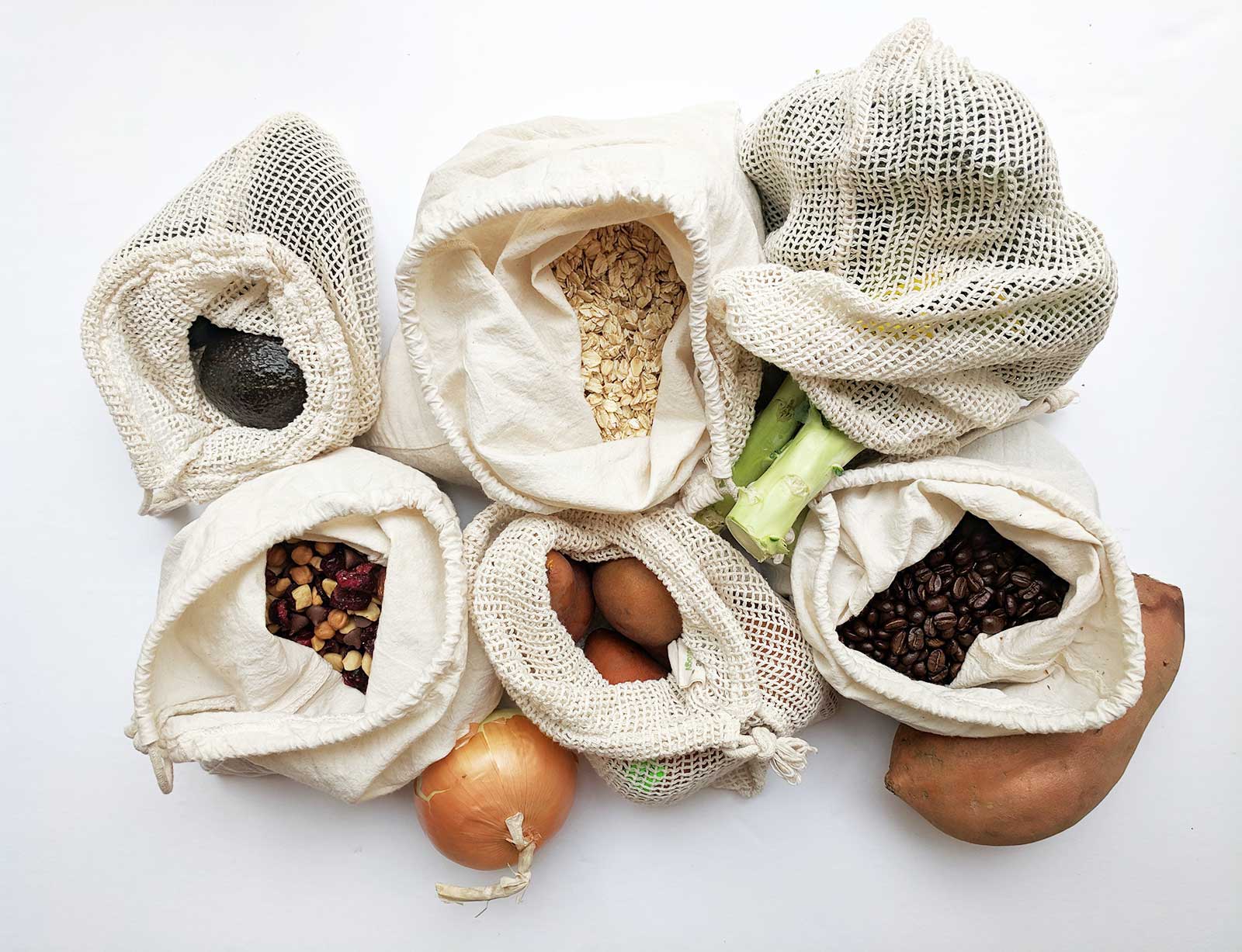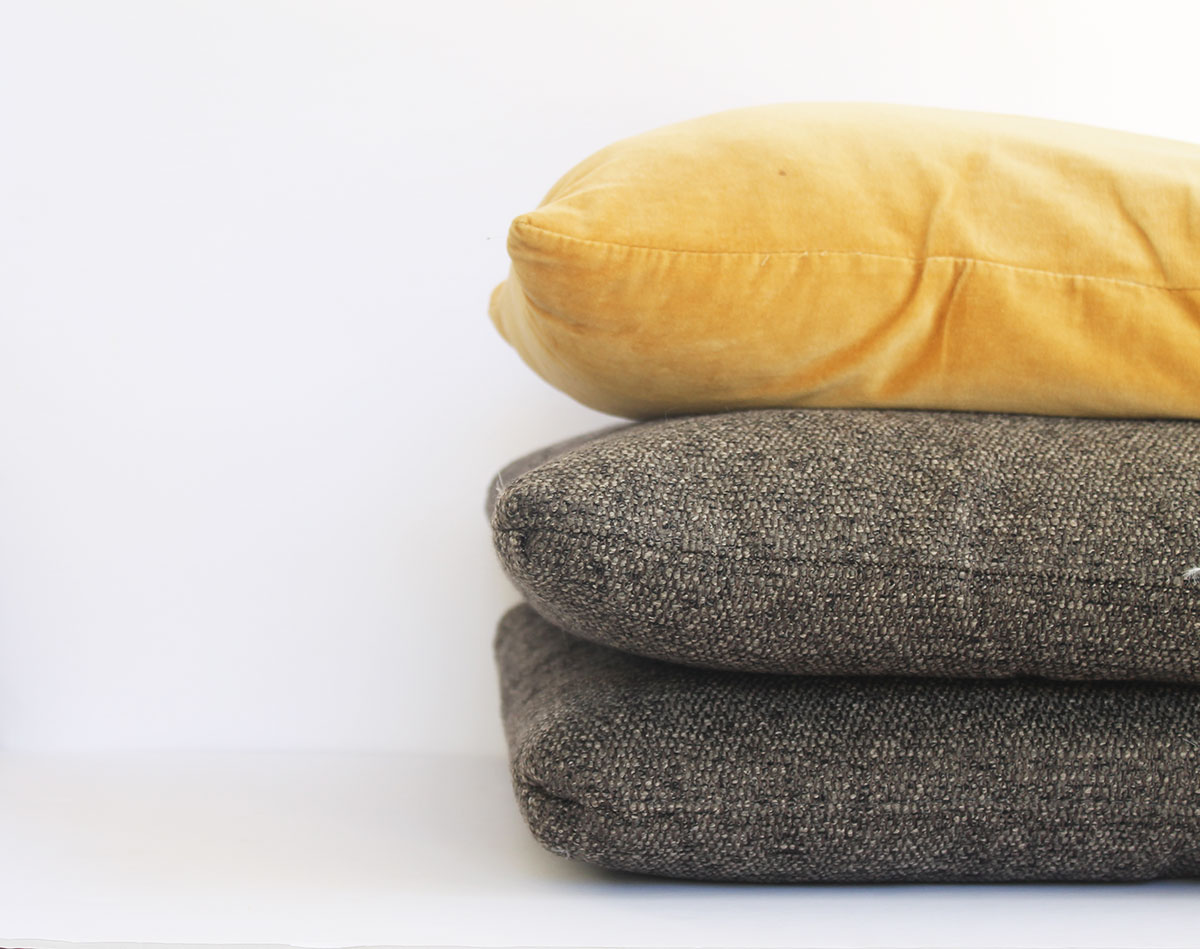Zero Waste Grocery Shopping Tips and Essentials

What is Zero Waste Shopping?
Shopping zero waste means shopping for items sans disposable packaging. This means no disposable bags (plastic or paper), no pre-packaged snacks, no individually wrapped items, etc.
The amount of packaging waste produced in the US increases year after year (close to 78 million tons in 2015!) and a significant percentage of that waste is not recycled. In 2015 the EPA estimated that close to 40% of all packaging ended up in landfills.
While purchasing products packaged in recyclable packaging like glass, paper, aluminum, and cardboard is certainly a better alternative, it still requires energy to process and re-purpose recyclables. So if it’s possible to minimize (or even eliminate!) the packaged products that we currently consume, why wouldn’t we at least try?
Zero Waste Grocery Shopping Tips
The concept of zero waste grocery shopping might seem foreign and intimidating to folks who haven’t considered it before (… How do I buy coffee beans? Cereal? Milk?) but once you re-examine your grocery store bulk options and adjust your grocery shopping routine, then zero waste shopping becomes just that – a regular routine.
Produce
The easiest place to start is fruits and veggies. Simply opt for unpackaged versions and ignore the rolls of plastic bags you may have once used to corral like items. A better alternative? Reusable produce bags! Store clerks can see/count/weigh the items in mesh reusable bags just as well as they can in disposable plastic bags.
Dry Goods
For dry goods like cereal, nuts, baking ingredients, snacks, beans, rice, pasta, coffee, etc. – check out the bulk bins in your local grocery store. You might be surprised to find many of your household staples sold in bulk. To keep this part of your shopping trip truly “zero waste,” bring reusable bulk bin bags and either a felt pen or a water soluble crayon to write down the bin labels for checkout directly on the bag.
Some grocers have larger selections of bulk items than others. Stores like Whole Foods, Sprouts, and specialty health food stores are great places to look if you’re having trouble finding sufficient options in your local Vons, Albertsons, or Safeway.
If you do not have many bulk options available near you then do your best to purchase items sold in recyclable packaging. Opt for cardboard/paper/glass/aluminum packaging whenever possible and do your best to avoid plastic!
Meat, Cheese, and Dairy
Here is where you make friends with the folks behind the counter. Meat, fish, and cheese can all be purchased unpackaged if you shop at a store with a meat and dairy counter. Bring containers or jars with you on your shopping trips and once you’ve selected what you’d like to purchase, ask the attendant to place your food directly into your jar.
You might need to remind them to remove the tare weight from your jar or container first, then place whatever product you’d like to purchase directly into your container. They are required to print a price sticker that they will place on top of your jar to be scanned at checkout.
Most store associates are really friendly when we ask them to do this (especially when asked confidently with a smile). Sometimes they have concerns because once they place a food product into your container, they are no longer allowed to take it back out for sanitary reasons even if they over estimated the volume. Let them know that you’re comfortable if they overestimate slightly and carry on.
Regardless of the reaction you receive from store associates, all interactions are made better when you simply respond happily with a smiley “thank you” and express gratitude for their partnership in helping the environment.
Beverages and Condiments
Milk and Cream – For milk and cream, my husband and I like purchasing Strauss Family Creamery brand. It comes in thick glass jars that can be washed and returned to the store for $2 credit. Those jars are then professionally sterilized and reused again!
Juice – Some stores like Whole Foods offer things like fresh squeezed orange juice that you can squeeze into a reusable container. If that’s not a readily available option, it is very easy to make your own fresh fruit juice and smoothies at home (citrus juicer, masticating juicer, blender).
Wine and Beer – In bigger cities you can sometimes find wine refilleries for wine (in San Diego, we love LJ Crafted Wines). The website TapHunter can help you find locations where you can refill beer growler near you.
Condiments – It is extremely rare to find condiments sold in bulk. With this in mind you have two good options: 1) DIY and 2) purchase condiments sold in recyclable packaging. We primarily opt for the latter (both my husband and I work full time and care for a 15 month old so free time is tight). With that said, it’s actually really easy to make your own mustard, pickles, mayonnaise, salsa, hummus, dressings, and more.
If any of these zero waste alternatives are not readily available and you’re not interested in DIY, then simply try your best to choose locally produced options packaged in recyclable materials.
*Keep in mind – Do not let zero waste shopping become a torturous or excessively inconvenient exercise in the spirit of achieving zero waste perfection. You do not need to feel pressure to drive to multiple stores just so you can get that last bulk bin item you need for this week’s recipe! Perfection is often not a realistic goal. You should instead feel good that every “better” choice you make when shopping slowly adds up and at scale can make a big difference.
5 Zero Waste Shopping Kit Essentials
So you’re excited to start your zero waste grocery shopping adventure – awesome! Below I laid out exactly what we use in our zero waste shopping kit.
1. Reusable Tote Bags
Use to carry all of your shopping purchases (groceries or otherwise!) – I keep a few in my car at all times just in case.
2. Bulk Bin Bags
Fill these with dry goods from bulk bins (cereal, trail mix, rice, dried fruit, etc.) and use the drawstring to enclose.
3. Produce Bags
These are a great alternative to plastic bags because cashiers can still easily see/count/weigh your produce items if corralled in these mesh bags.
4. Jars
Use these when purchasing meat, fish, or cheese from behind the butcher and dairy counters. We just transfer them directly into our fridge when we come home from the store.
We also have more of these jars at home in various sizes that we fill with the bulk bin items.
5. Water Soluble Crayon or Felt Pen
Use this to label your bulk bin bags with the bin number. The bin numbers will disappear when you wash your bulk bin bags in cold.






